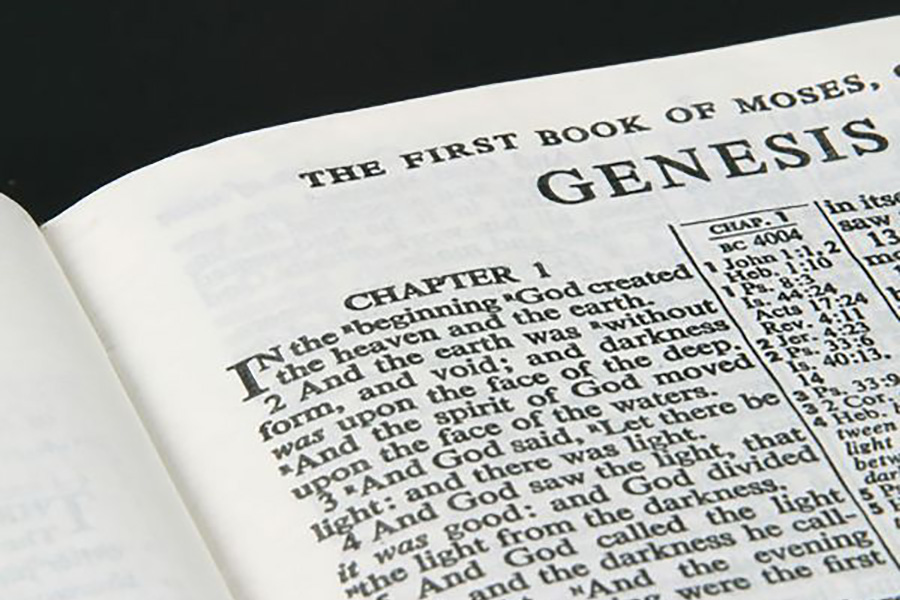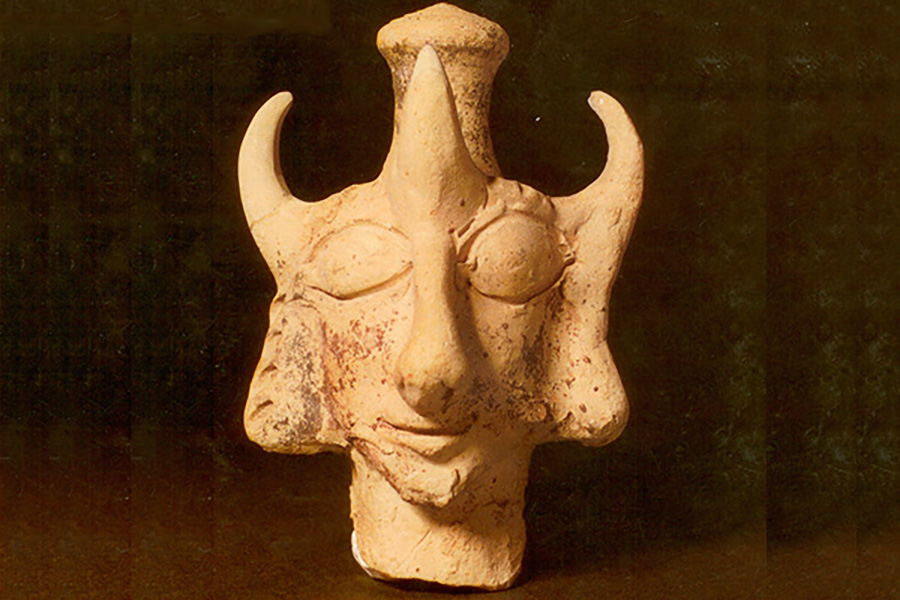The word Yasharah (𐤉𐤔𐤓𐤄) means “She Who Guides” and is the third-person proper name of the speculated wife of Yahayah.
The Paleo-Hebrew language or the original language of the Ābarayam is one spoken with an emphasis on the rauakh (breath, wind, spirit). With the language of the Ābarayam, each letter has a meaning and a number associated with it that adds meaning to each word they’re used with. Below you will be able to learn more about the letter in Ancient Hebrew, Yiddish Hebrew, Greek, and much more.
Letter Meanings
| Letter | Meaning |
|---|---|
| 𐤉 (y) – ya | Arm, hand, work, thrust, deed, make, throw, worship Prefix: he/she, turns a word third person |
| 𐤔 (sh) – sha | Teeth, eat, consume, destroy, bite, two, change, divide, press, repeat |
| 𐤓 (r) – ra | Head and person, man, beginning, top, rule, inheritance, possession |
| 𐤄 (h) – ha | Look, Behold, The, Reveal, breath (life), man Suffix: to, toward, in the direction of, -ward, her, feminine form, it |
| Ābarayat Number | 515 = 10 (y) + 300 (sh) + 200 (r) + 5 (h) |
| Hebrew Gematria | 589 = 400 (y) + 1 (a) + 90 (s) + 8 (h) + 1 (a) + 80 (r) + 1 (a) + 8 (h) |
| English Gematria | 486 = 150 (y) + 6 (a) + 114 (s) + 48 (h) + 6 (a) + 108 (r) + 6 (a) + 48 (h) |
| Simple Gematria | 81 = 25 (y) + 1 (a) + 19 (s) + 8 (h) + 1 (a) + 18 (r) + 1 (a) + 8 (h) |
Based on the meaning of the letters the word could be defined as:
- “She who guides”
- “She who protects”
- “She who defends”
- “She who persists”
- “She who is queen”
- Combines Yah and Sharah
- Combines Yashar and H
- Combines Yash and Rah
Definitions for 𐤉𐤔𐤓𐤄 / Yasharah
| Language | Word | Transliteration | Pronunciation | Definition |
|---|---|---|---|---|
| Ābarayat | 𐤉𐤔𐤓𐤄 | Yasharah | ya-sha-raw | the proper name of the speculated wife of Yahayah. |
| English | uprightness | uprightness | uhp-rahyt-nis | adhering to rectitude; righteous, honest, or just. |
| Hebrew | יִשְׁרָה | yesharah | yish-raw’ | uprightness |
| Arabic | مستقيم | mustaqim | moos-ta-keem | straight, upright, right, rectum, |
| Greek | Ευθύς | euthus | yoo-thoos’ | (a) straight of direction, as opposed to crooked, |
Images for 𐤉𐤔𐤓𐤄 / Yasharah
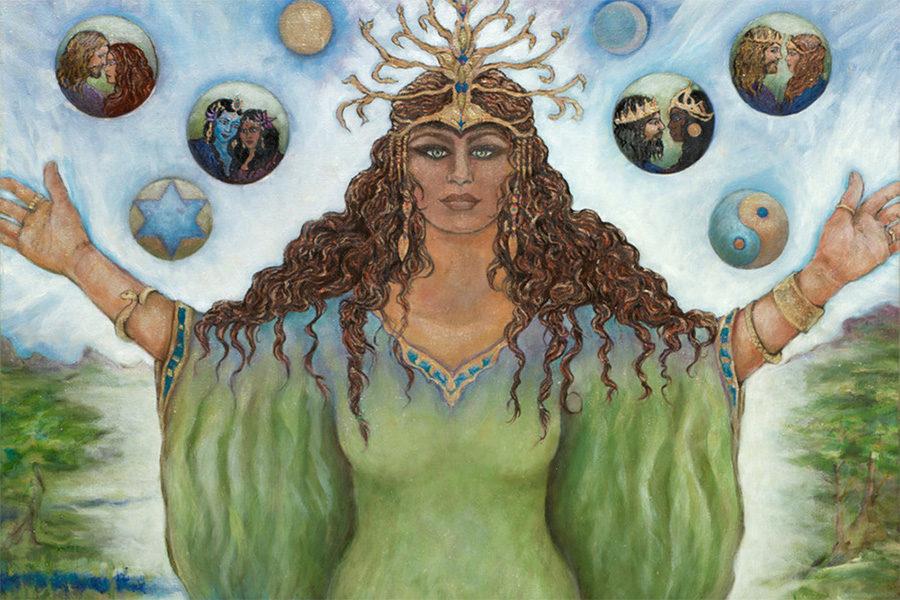

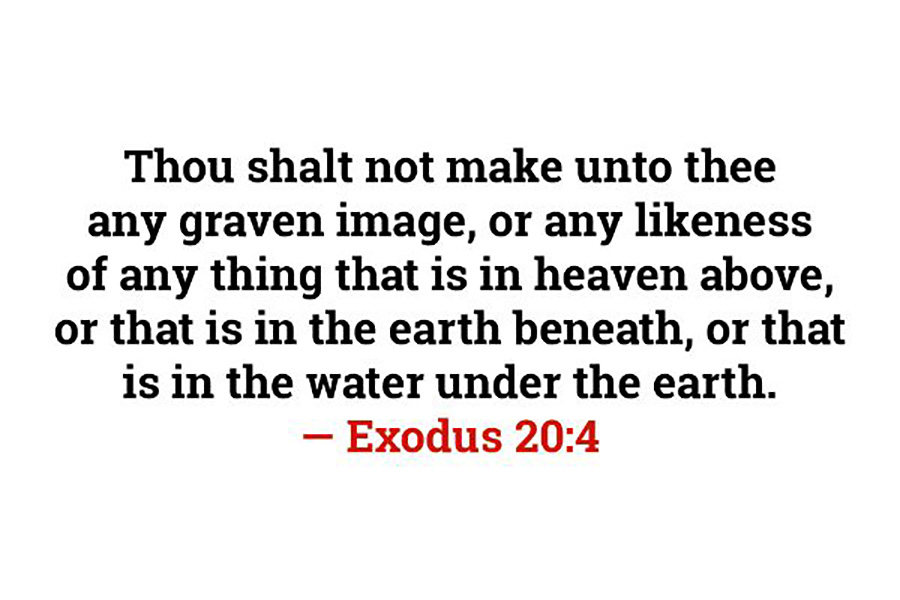
𐤀𐤔𐤓𐤄 (Asharah) and 𐤉𐤔𐤓𐤄 (Yasharah)
The name we know as Asherah is translated to Ābaray as 𐤀𐤔𐤓𐤄 (Asharah). The name is identified by the Strong’s Hebrew to mean grove, but we don’t fully believe that is the case. However, if her name follows the same pattern as 𐤀𐤄𐤉𐤄 (Ahayah) for first-person then her name would be 𐤉𐤔𐤓𐤄 (Yasharah) for third-person like 𐤉𐤄𐤉𐤄 (Yahayah). In Arabic, the name Yashara[h] can mean intelligent or wealthy and is a given female name.
Ya + Sharah Combination
If her name follows this pattern then it combines 𐤀 (alaph) or 𐤉 (yad) with 𐤔𐤓𐤄 (sharah). 𐤔𐤓𐤄 (sharah) is the same name given to 𐤀𐤁𐤓𐤄𐤌 (Abaraham)’s wife by 𐤉𐤄𐤉𐤄 (Yahayah). 𐤔𐤓𐤄 (sharah) can mean “to let loose, direct, guide”, “fortification, wall, defend”, “to persist, exert oneself, persevere, have power as a prince”, or “princess, noble lady, queen”.
From these combinations, her name could mean:
- “She who guides”,
which aligns with her potentially being the Rauach Qadash / Rayach Qadash. - “She who defends/protects”,
which aligns with the role that Yahayah gives the wives and mothers in the household as a protector of their children while the husband protects the wife. - “She who persists”
- “She who is queen”,
aligns with the potential of her being the Queen of Heaven.
Yashar/Ashar + h Combination
If her name is a combination of 𐤉𐤔𐤓 (Yashar) and the letter 𐤄 (ha) then she will follow the same pattern as 𐤉𐤔𐤓𐤀𐤋 (Yasharaal). However, instead of being the “Righteous of Al” her name would be “Righteous Breath (life)” or “Righteous Jubilation.” Adding the 𐤄 (ha) also makes the word a feminine form of the masculine 𐤉𐤔𐤓 (Yashar).
If her name is a combination of 𐤀𐤔𐤓 (Ashar) and 𐤄 (ha) then we would need to combine the meaning of “to go straight, go on, advance, call, happy, be blessed, guide, lead, relieve” or “happy one” with the meaning of the 𐤄 (ha). This would give us “Advance Breath (life)”, “Guide Breath (life)”, “Happy Breath (life)”, or “Be Blessed of Breath (life)”.
Asharah in History

𐤀𐤔𐤓𐤄 (Asharah) or Asherah is most known in the positive as the wife of Al Ālayauan in monolatry Semitic religions, but in the negative in the scriptures as a pagan deity, who we shouldn’t worship. However, she has historically been conflated with 𐤀𐤎𐤈𐤓𐤈𐤄 (Asatharathah), 𐤏𐤔𐤕𐤓𐤕 (Āshatarat), and 𐤏𐤍𐤕 (Ānat). All three are recorded as 𐤁𐤀𐤋 (Baāl)’s wife and Asherah’s children in other Semitic religions. Though 𐤏𐤍𐤕 (Ānat) should not be confused with 𐤀𐤍𐤕 (Anat), who is the wife of 𐤀𐤍 (An).
What more than likely happened, and has been seen in history, is older deities who are forgotten get replaced in their seat of power similar to how The Most High, 𐤉𐤄𐤉𐤄 (Yahayah), was replaced with 𐤁𐤏𐤋 (Baāl) when the 𐤀𐤃𐤅𐤌𐤉𐤌 (Adauamayam) took over the temple. She is a mother goddess who appears in a number of ancient sources.
She appears in Akkadian writings by the name of Ašratu(m), and in Hittite writings as Aserdu(s) or Asertu(s). 𐤀𐤔𐤓𐤄 (Asharah) is generally considered identical to the Ugaritic goddess ʾAṯiratu.
𐤀𐤔𐤓𐤄 (Asharah) is identified as the consort of the 𐤀𐤍𐤅𐤍𐤀𐤒𐤉 (Anauanaaqay) or Sumerian god 𐤀𐤍𐤅 (Anau), and his Ugaritic identity 𐤀𐤋 (Al) the oldest deities of their respective pantheons. This role gave her a similarly high rank in the Ugaritic pantheon.
All this being said, if the scriptures haven’t been altered, in 𐤃𐤁𐤓𐤉𐤌 (Dabarayam) 12, 𐤉𐤄𐤅𐤄 (Yahauah) does command that we destroy all 𐤀𐤔𐤓𐤉𐤄𐤌 (Asharayaham) in the land of 𐤊𐤍𐤏𐤍 (Kanaān). This has been translated to refer to 𐤀𐤔𐤓𐤄 (Asharah) worship. However, based on the functions of Ābarayat it should be written as 𐤀𐤔𐤓𐤄𐤉𐤌 (Asharahayam) so it could be referring to something entirely different.
In 𐤉𐤓𐤌𐤉𐤄 (Yaramayah) 7 and 44 she is referenced as the queen of heaven and it was said that the 𐤉𐤄𐤉𐤃𐤄𐤉𐤌 (Yahayadahayam) made 𐤉𐤄𐤉𐤄 (Yahayah) angry for making cakes for her and lighting incense. In both instances, our people were placing 𐤀𐤔𐤓𐤄 (Asharah) before the Most High and also worshipping other deities in the land along with her.
The 𐤒𐤃𐤔 (Qadash) and Other Titles

Another title outside of Queen of Heaven that has been given to her is Qadeshtu. This is equivalent to our Ābarayat word 𐤒𐤃𐤔 (Qadash). It means “Holy/Blessed One” or “Set Apart One”.
In the “Ba’al Epic”, she appears to champion her son, 𐤉𐤌 (Yam), the deity of the sea, in his struggle against 𐤁𐤏𐤋 (Baāl). 𐤉𐤌 (Yam)’s ascription as ‘deity of’ the sea in the English translation is somewhat incorrect, however, as yām (Ābarayat: 𐤉𐤌) is a common western Semitic root that literally means ‘sea’.
As a result, one could understand 𐤉𐤌 (Yam) to be the sea itself, deified, as opposed to a deity who holds dominion over it. 𐤀𐤔𐤓𐤄 (Asharah) / 𐤀𐤈𐤉𐤓𐤕 (Athayarat)’s title can therefore be translated as “the lady of the sea”, alternatively, “she who walks on the sea”.
This holds similarities to the verse in 𐤁𐤓𐤀𐤔𐤉𐤕 (Ba-raashayat) 1 where it says “And Rauakh Alahayam was moving over [the] faces of the waters.” This can be interpreted as the same as the 𐤀𐤋𐤄𐤉𐤌 (Alahayam) who walks on the sea.
Alternative translations of her title follow this suggested etymology, “she who treads on the sea dragon”, or “she who treads on Tyre”. The sea dragon can be seen as the same serpent that deceives 𐤀𐤃𐤌 (Adam) and 𐤇𐤉𐤄 (Khayah) or even the 𐤋𐤅𐤉𐤕𐤍 (Lauayatan).
Another primary epithet of Athirat or 𐤀𐤈𐤉𐤓𐤕 (Athayarat) was qnyt ʾilm, which may be translated as “the creatrix of the deities”. In those texts, she is the consort of the god 𐤀𐤋 (Al); there is one reference to the 70 sons of 𐤀𐤔𐤓𐤄 (Asharah), presumably the same as the 70 sons of 𐤀𐤋 (Al). Among the Hittites, this goddess appears as Asherdu(s) or Asertu(s), the consort of Elkunirsa (‘El, the Creator of Earth’) and mother of either 77 or 88 sons.
She is also called 𐤀𐤋𐤕 (Alat), ‘goddess’, the feminine form of 𐤀𐤋 (Al) (compare Allat), and Qodesh or Qudshu, ‘holiness’. This follows a similar pattern with the titles of 𐤁𐤏𐤋 (Baāl), meaning lord, and his wife’s title 𐤁𐤏𐤋𐤕 (Baālat), meaning lady.
Monotheism
Between the 10th century BCE (100 BCE) and the beginning of their Babylonian exile in 586 BCE, polytheism was normal throughout 𐤉𐤔𐤓𐤀𐤋 (Yasharaal). Worship solely of 𐤉𐤄𐤉𐤄 (Yahayah) / 𐤉𐤄𐤅𐤄 (Yahauah) became established only after the exile, and possibly, only as late as the time of the Maccabees (2nd century BCE or 200BCE). That is when monotheism became universal among the 𐤉𐤔𐤓𐤀𐤋𐤉𐤌 (Yasharaalayam). Some believe that 𐤀𐤔𐤓𐤄 (Asharah) at one time was worshipped as the consort of 𐤉𐤄𐤉𐤄 (Yahayah) / 𐤉𐤄𐤅𐤄 (Yahauah), the national 𐤀𐤋𐤄 (alah) of 𐤉𐤔𐤓𐤀𐤋 (Yasharaal).
Further evidence for 𐤀𐤔𐤓𐤄 (Asharah)-worship includes an 8th-century BCE (800 BCE) combination of iconography and inscriptions discovered at Kuntillet Ajrud in the northern Sinai desert where a storage jar shows three anthropomorphic figures and several inscriptions. The inscriptions found refer not only to Yahauah (Yahweh) but to ʾEl and Baʿal, and two include the phrases “Yahweh of Samaria and his Asherah” and “Yahweh of Teman and his Asherah.” The references to Samaria (capital of the kingdom of Israel) and Teman (in Edom) suggest that 𐤉𐤄𐤅𐤄 (Yahauah) had a temple in Samaria, while raising questions about the relationship between 𐤉𐤄𐤅𐤄 (Yahauah) and 𐤒𐤅𐤎 (Qauas) aka Qos/Kaus, the national god of Edom.
The name 𐤀𐤔𐤓𐤄 (Asharah) appears forty times in the Ābaray scriptures, but it is much reduced in English translations. The association of 𐤀𐤔𐤓𐤄 (Asharah) with trees in the Ābaray scriptures is very strong. Trees described as being an asherah or part of an asherah include grapevines, pomegranates, walnuts, myrtles, and willows.
To worship or not to worship?
Verses in the scriptures show a gender imbalance. 𐤀𐤔𐤓𐤄 (Asharah) was patronized by female royals such as the Queen Mother Maacah (1 Malakayam 15:13). But more commonly, perhaps, 𐤀𐤔𐤓𐤄 (Asharah) was worshiped within the household and her offerings were performed by family matriarchs. As the women of 𐤉𐤓𐤅𐤔𐤋𐤌 (Yarauashalam) attested, “When we burned incense to the Queen of Heaven and poured out drink offerings to her, did not our husbands know that we were making cakes impressed with her image and pouring out drink offerings to her?” (Yaramayah 44:19).
Popular culture defines Canaanite religion and Hebrew idolatry as sexual “fertility cults,” products of primitive superstition rather than spiritual philosophy. As for sexual and fertility rites, it is likely that they were once held in honor in 𐤉𐤔𐤓𐤀𐤋 (Yasharaal), which coincides with how they were viewed throughout the ancient world. Although their nature remains uncertain, sexual rites typically revolved around women of power and influence, such as Maacah. The Hebrew term qadishtu, is usually translated as “temple prostitutes” or “shrine prostitutes”, but literally means “priestesses” or “priests”.
Another stance that people who believe 𐤌𐤔𐤄 (Mashah)’s staff had snakes on it have taken is “[Asharah]’s sacred pillars or poles once stood right beside [Yahayah]’s altar, embracing it. Moses and Aaron both carried one of these Asherah ‘poles’ as a sacred staff of power. The Children of Israel were once dramatically healed simply by gazing at the staff with serpents suspended from it.[…] Asherah was also widely known in the [Ancient Semitic] world as a Goddess of Healing.”
However, if 𐤀𐤔𐤓𐤄 (Asharah) exists and she is the wife of The Most High then the question becomes, “Is sexual rites what she instructed us to do, or did our people just choose to do things in her name that were against what she wanted?” The Ābarayam have a track record of not following 𐤉𐤄𐤉𐤄 (Yahayah)’s instructions so it’s not far-fetched that we would struggle to follow his wife’s guidance too.
𐤓𐤅𐤇 𐤒𐤃𐤔 (Rauakh Qadash)
The first mention of the 𐤓𐤅𐤇 𐤒𐤃𐤔 (Rauakh Qadash) / 𐤓𐤉𐤇 𐤒𐤃𐤔 (Rayakh Qadash) is in the first chapter of 𐤁𐤓𐤀𐤔𐤉𐤕 (Ba-raashayat).

Verse 1
𐤁𐤓𐤀𐤔𐤉𐤕 𐤁𐤓𐤀 𐤀𐤋𐤄𐤉𐤌 𐤄𐤔𐤌𐤉𐤌 𐤅𐤀𐤕 𐤄𐤀𐤓𐤑
Ba-raashayat baraa alahayam Ha-Shamayam ua-at Ha-Arats.
(In a beginning created gods the heavens and the earth.)
Verse 2
𐤅𐤄𐤀𐤓𐤑 𐤄𐤉𐤕𐤄 𐤕𐤄𐤅 𐤅𐤁𐤄𐤅–𐤅𐤇𐤔𐤊 𐤏𐤋־ 𐤐𐤍𐤉 𐤕𐤄𐤅𐤌. 𐤅𐤓𐤅𐤇 𐤀𐤋𐤄𐤉𐤌 𐤌𐤓𐤇𐤐𐤕 𐤏𐤋־ 𐤐𐤍𐤉 𐤄𐤌𐤉𐤌
Ua-ha-Arats hayatah tahau, ua-bahau–ua-chashak al- panay thahauam. Ua-rauakh alahayam ma-rakhapat al- panay ha-mayam.
(And the earth was formless and void–and darkness [was] over the faces of the deep. And the breath (life) of gods was hovering over the face of the waters.)
She is mentioned 47 times in the scriptures but is mostly referred to as either Yah’s spirit or the Holy Spirit. The word Holy comes from our Ābarayat word 𐤒𐤃𐤔 (Qadash), which means Set Apart. This is the same title given and used by 𐤀𐤔𐤓𐤄 (Asharah) as she was seen as the “Set Apart One”. The word that describes spirit is 𐤓𐤅𐤇 (Rauakh), which is a feminine noun and means “breath, wind, spirit, air, anger, blast, cool, courage, or mind.”
Furthermore, and most importantly, breath is viewed as life as we view blood as life. When the 𐤓𐤅𐤇 (Rauakh) entered the dirt he came to life and became 𐤀𐤃𐤌 (Adam). If you remember from the earlier information a possible definition of 𐤀𐤔𐤓𐤄 (Asharah)’s name was “Righteous Breath (life)” or “Guide(d) Breath (life)”.
In the scriptures, the “Holy Spirit” is represented by a dove—a ubiquitous symbol of goddess religions, also found on Hebrew naos shrines. The dove represented feminine fertility and procreation and came to be a well-recognized symbol of 𐤀𐤔𐤓𐤄 (Asharah).
In the non-canon Gnostic Gospel of Thomas, 𐤉𐤄𐤉𐤔𐤉𐤏 (Yahayashayaā) is depicted saying, “Whoever knows the Father and the Mother will be called the child of a whore.” F. F. Bruce writes: “Jesus may be complaining that he himself, who knows his true Father and to be God (John 8:18) – and possibly his true mother to be the Holy Spirit, as in the Gospel according to Hebrews – is nevertheless stigmatized as being ‘born of fornication (according to a possibly mistaken interpretation of John 8:41).”
The 4th century Nazarenes adopted the apocryphal Gospel of the Hebrews as canonical. In the aforementioned text, 𐤉𐤄𐤉𐤔𐤉𐤏 (Yahayashayaā) speaks of the “Holy Spirit” as his mother and thus as female. In the Greek text of 𐤋𐤅𐤒 (Lauaq) 1:26-38, it reads “Καὶ ἀποκριθεὶς, ὁ ἄγγελος εἶπεν αὐτῇ, Πνεῦμα Ἅγιον ἐπελεύσεται ἐπὶ σέ, καὶ δύναμις Ὑψίστου ἐπισκιάσει σοι; διὸ καὶ τὸ γεννώμενον ἅγιον κληθήσεται Υἱὸς Θεοῦ.” Through translation it reads, “And answering, the angel said to her, spirit set apart will enter you and energy of the Most High will surround you; therefore also the being born holy will be called of God.”
𐤌𐤓𐤉𐤌 (Marayam) is called a παρθένον (parthenon) which is commonly translated to a virgin. However, that word in Greek means (1) maiden, (2) someone who has not had sex, or (3) someone who is older than puberty but is not married yet. Her name means bitters, drops, and myrrhs, as a plural of the word 𐤌𐤓 (Mar). The way the conception of the Messiah is depicted it appears that the 𐤓𐤅𐤇 𐤒𐤃𐤔 (Rauakh Qadash) took possession of the body of 𐤌𐤓𐤉𐤌 (Marayam) while the energy of the Most High covered 𐤌𐤓𐤉𐤌 (Marayam) in order to conceive the Messiah inside of 𐤌𐤓𐤉𐤌 (Marayam)’s body.
The common misconception is that the 𐤓𐤅𐤇 𐤒𐤃𐤔 (Rauakh Qadash) impregnated 𐤌𐤓𐤉𐤌 (Marayam) but it is clear based on 𐤂𐤁𐤓𐤉𐤀𐤋 (Gabarayaal) description that two divine beings are at play during the process. This misconception comes from 𐤌𐤕𐤕𐤉𐤄 (Matatayah) 1:18-25 where it is written γεννηθὲν ἐκ (gennēthen ek) which is usually translated to “having been conceived from” but based on the Greek words can be translated to “having conceived with help of…”
Holy Spirit
The “Holy Spirit”, also known as the “Holy Ghost”, in Judaism, refers to the divine force, quality, and influence of “God” over the universe or over his creatures. In Nicene Christianity, the “Holy Spirit” is the third person of the Trinity. In Islam, the “Holy Spirit” acts as an agent of divine action or communication. Based on the Old Testament, the book of 𐤌𐤋𐤋𐤀𐤉𐤌 (Maalalayam) emphasizes the power of ministry aspect of the “Holy Spirit”.
According to Rudolf Bultmann, there are two ways to think about the “Holy Spirit”: “animistic” and “dynamistic”. In animistic thinking, it is “an independent agent, a personal power which like a demon can fall upon a man and take possession of him, enabling him or compelling him to perform manifestations of power” while in dynamistic thought it “appears as an impersonal force which fills a man like a fluid”.
Both kinds of thought appear in Jewish and Christian scripture, but animistic is more typical of the Old Testament whereas dynamistic is more common in the New Testament. The distinction coincides with the “Holy Spirit” as either a temporary or permanent gift. In the Old Testament and Jewish thought, it is primarily temporary with a specific situation or task in mind, whereas in the Christian concept, the gift resides in persons permanently.
Judaism Summarized
The Holy Spirit in Judaism generally refers to the divine aspect of prophecy and wisdom. It also refers to the divine force, quality, and influence of the Most High God, over the universe or over his creatures, in given contexts.
Christianity Summarized
In Christianity, the Holy Spirit is the One who empowers the followers of the Messiah with spiritual gifts and power that enables the proclamation of the Messiah and the power that brings conviction of faith.
Islam Summarized
The Holy Spirit is mentioned four times in the Qur’an, where it acts as an agent of divine action or communication. The Muslim interpretation of the Holy Spirit is generally consistent with other interpretations based on the Old and the New Testaments. On the basis of narrations in certain Hadith, some Muslims identify it with the angel Gabriel.
The Spirit is described, among other things, as the creative spirit from “God” by which “God” enlivened Adam, and which inspired in various ways God’s messengers and prophets, including 𐤉𐤄𐤉𐤔𐤉𐤏 (Yahayashayaā) and 𐤀𐤁𐤓𐤄𐤌 (Abaraham). The belief in a “Holy Trinity”, according to the Qur’an, is forbidden and deemed to be blasphemy. The same prohibition applies to any idea of the duality of God (Allah).
Baháʼí Faith Summarized
The Baháʼí Faith has the concept of the Most Great Spirit, seen as the bounty of God. It is usually used to describe the descent of the Spirit of God upon the messengers/prophets of God who include, among others, 𐤉𐤄𐤉𐤔𐤉𐤏 (Yahayashayaā), 𐤌𐤅𐤇𐤌𐤃 (Mauakhamad) aka Mahomet or Muhammad, and Bahá’u’lláh. The Baháʼí view rejects the idea that the Holy Spirit is a partner to God in the Godhead, but rather is the pure essence of God’s attributes.
In Baháʼí belief, the Holy Spirit is the conduit through which the wisdom of God becomes directly associated with his messenger, and it has been described variously in different religions such as the burning bush to Moses, the sacred fire to Zoroaster, the dove to Jesus, the angel Gabriel to Muhammad, and the Maid of Heaven to Bahá’u’lláh (founder of the Baháʼí Faith).
Zoroastrianism Summarized
In Zoroastrianism, the Holy Spirit, also known as Spenta Mainyu, is a hypostasis of Ahura Mazda, the supreme Creator God of Zoroastrianism; the Holy Spirit is seen as the source of all goodness in the universe, the spark of all life within humanity, and is the ultimate guide for humanity to righteousness and communion with God. The Holy Spirit is put in direct opposition to its eternal dual counterpart, Angra Mainyu, who is the source of all wickedness and who leads humanity astray.
Gnosticism Summarized
The ancient Gnostic text known as the Secret Book of John refers to the supreme female principle, Barbēlō, as the Holy Spirit. Barbēlō is often depicted as a supreme female principle, the single passive antecedent of creation in its manifoldness. This figure is also variously referred to as ‘Mother-Father’ (hinting at her apparent androgyny), ‘First Human Being’, ‘The Triple Androgynous Name’, or ‘Eternal Aeon’. So prominent was her place amongst some Gnostics that some schools were designated as Barbeliotae, Barbēlō worshippers, or Barbēlō gnostics.
As in Heaven as on Earth: Households as a Reflection of the Kingdom
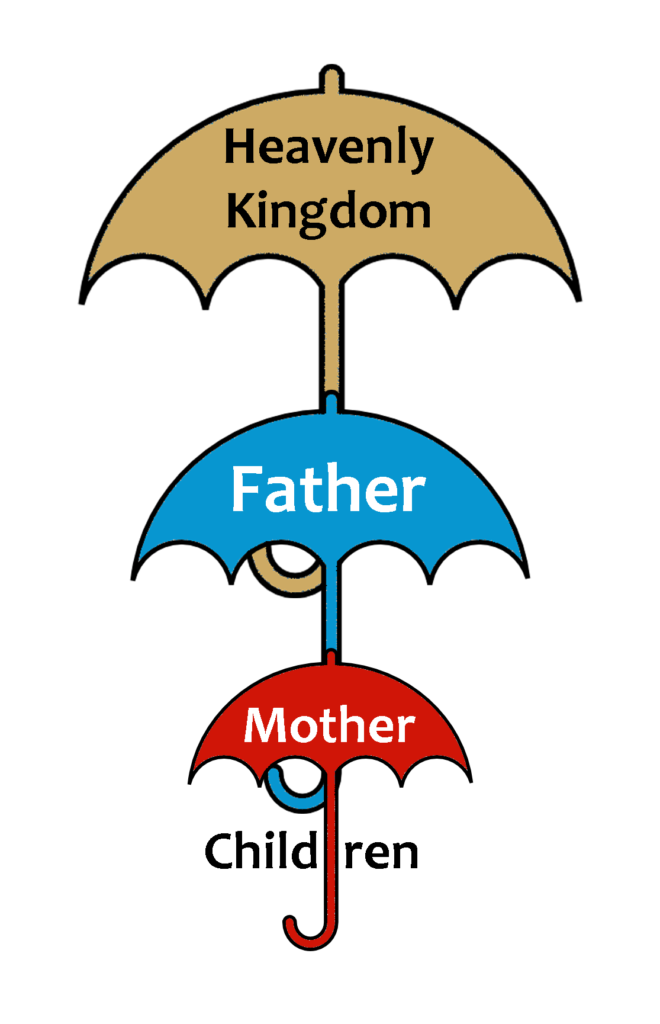
In the scriptures, the 𐤀𐤋𐤄𐤉𐤌 (alahayam) say that man should not be alone and should have a helpmate. This can be interpreted by the reader as Yah having previous experience in the benefit of women in the lives of men.
However, if you subscribe to the belief that he has no wife, the “Holy Spirit” is male (even though all accounts identify it as feminine), and all angels are male then why would the Most High ever consider a man needing a female helpmate if all of His helpers are male. But if he had a wife then He has first-hand experience with the benefit of a wife helping a man.
One of the consistent things people talk about in discussions and in the scriptures is how Yah wants our houses to be a reflection of heaven, but that reflection is typically the man as the head to protect and lead the wife/mother and then the wife/mother above the children to protect and lead the children.
However, if that’s how He views our earthly homes then how are we reflecting heaven if He doesn’t have that same structure for Himself in the heavens?
Possible Misinterpretations of the Scriptures
As we continue to return to the will and way of the Most High we will have more about our history revealed. However, there are elements of the scripture that may have been misinterpreted and should be discussed.
The creation story of the Ābaray clearly identifies that it was multiple 𐤀𐤋𐤄 (alah) or divine beings there during the creation. However, in English, they claim it’s the royal we and translate it to God as singular. This is not a normal linguistic trait of Ābarayat. Never does 𐤉𐤔𐤓𐤀𐤋 (Yasharaal) speak of himself as 𐤉𐤔𐤓𐤀𐤋𐤉𐤌 (Yasharaalayam) nor does 𐤃𐤅𐤃 (Dauad) call himself 𐤃𐤅𐤃𐤉𐤌 (Dauadayam). The addition of 𐤉 (or ay in writing) is used to say “belonging to/of [something]” when it comes to condition or can be used to say “my [something]”. Dauaday or “of Dauad”, Yasharaalay or “of Yasharaal”, Alahay or “of god”. Then the addition of 𐤌 (or am in writing) makes it plural.
Also, many scholars and translators brush off the banay(am) alahayam as another name for “Angels”. However, the scriptures have no problem addressing the malaakayam or angels as such in the text. Even within the same book, both are used. Also, there are cases where deities are listed as Asharah Alahayam, for example, but never Malaak Alahayam or Gabarayaal Alahayam.
What might have happened?
It’s possible that one of three or all three of the following happened in the history of the Ābaray that caused her erasure.
- At one point in time, our people were worshipping her more than Yah so he commanded our people to stop worshipping her until we could do things the right way by worshipping Him as the head of His house first and foremost.
- Our people started associating His wife with other gods and passing her around like she was a harlot which He didn’t like so He chose to punish us by not allowing us to worship her separately anymore.
- With Judaism’s and the Catholic Church’s takeover of our heritage, they erased her and replaced her with the “Holy Spirit”, which is originally Rauakh Qadash, which are both two names that the wife of Al Alayauan has gone by in history.
Nonetheless, if you can gain access to a Dead Sea Scrolls copy of the scriptures in Ābarayat (Paleo-Hebrew) then you’ll be able to gain more clarity on the original text of our people.
Definitions for 𐤉𐤔𐤓𐤄𐤉 / yasharahay
When adding the 𐤉 (yad) to the end of a word, it creates a possessive of the original word. It can either signify “my…” or identify a member of a nation. For example, 𐤏𐤁𐤓 (Ābar) is the progenitor, but 𐤏𐤁𐤓𐤉 (Ābaray) is the singular descendant of him also known as a Hebrew.
| Language | Word | Transliteration | Pronunciation | Definition |
|---|---|---|---|---|
| Ābarayat | 𐤉𐤔𐤓𐤄𐤉 | yasharahay | ya-sha-raw-hey | |
| English | ||||
| Hebrew | ||||
| Arabic | ||||
| Greek |
Images for 𐤉𐤔𐤓𐤄𐤉 / yasharahay


Definitions for 𐤉𐤔𐤓𐤄𐤉𐤌 / yasharahayam
When adding the 𐤌 (mayam) after the 𐤉 (yad) to the end of a word, it creates a plural of the original word. It can identify multiple members of a nation. For example, 𐤏𐤁𐤓 (Ābar) is the progenitor, but 𐤏𐤁𐤓𐤉𐤌 (Ābarayam) are the plural descendants of him also known as Hebrews.
| Language | Word | Transliteration | Pronunciation | Definition |
|---|---|---|---|---|
| Ābarayat | 𐤉𐤔𐤓𐤄𐤉𐤌 | yasharahayam | ya-sha-raw-yawm | |
| English | ||||
| Hebrew | ||||
| Arabic | ||||
| Greek |
Images for 𐤉𐤔𐤓𐤄𐤉𐤌 / yasharahayam


Definitions for 𐤉𐤔𐤓𐤄𐤉𐤕 / yasharahayat
When adding the 𐤕 (tau) after the 𐤉 (yad) to the end of a word, it creates a plural of the original word. It identifies the language or a sign of a nation’s existence. For example, 𐤏𐤁𐤓 (Ābar) is the progenitor, but 𐤏𐤁𐤓𐤉𐤕 (Ābarayat) is the language of him also known as Paleo-Hebrew language.
| Language | Word | Transliteration | Pronunciation | Definition |
|---|---|---|---|---|
| Ābarayat | 𐤉𐤔𐤓𐤄𐤉𐤕 | yasharahayat | ya-sha-raw-yawt | |
| English | ||||
| Hebrew | ||||
| Arabic | ||||
| Greek |
Images for 𐤉𐤔𐤓𐤄𐤉𐤕 / yasharahayat


Classification
You can continue your studies of the words by viewing Strong’s entries for:


